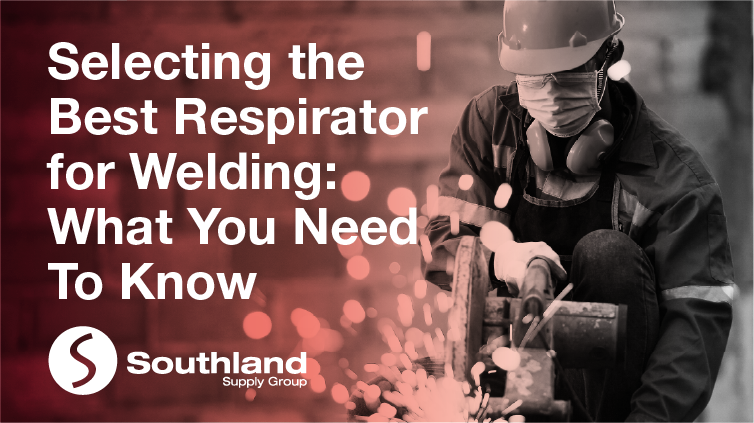
Increasing awareness about the health hazards associated with welding has changed the way welders work and the welding safety equipment they use to protect themselves.
The level of risk depends heavily on various factors such as the type of work being done, filler metals, coatings, contaminants and the amount of ventilation and respiratory protection. In general though, welders realise that the fumes and gases coming from their work can lead to serious illness.
With proper precautions, the amount of gas and fumes can be drastically reduced. Ventilation is always an essential control option. Whether you are ventilating the entire area or can drill down to a very specific confined space, replacing dirty air with clean is often the first go-to procedure.
Some types of welding produce more harmful fumes than others and some work environments expose you to more metal dust than welding fumes. Depending on your work conditions, you should check which type of respirator is the best fit for you.
There are three main types of welding respirators used: reusable masks, disposable masks, and air-purifying systems.
Disposable Welding Respirators
Disposable welding respirators are ideal for use under a welding helmet, they provide lightweight and comfortable respiratory protection.
Benefits:
- No maintenance
- Low unit cost
- fits under most welding helmets
- Light weight
Limitations:
- Not compatible with facial hair
- Increased heat retention and stuffiness
- Fit-test required
Reusable Welding Respirators
Reusable welding respirators use cartridges which you need to replace as often as necessary, depending on how much work they do.
If you use an auto-darkening welding helmet, you can only use a half-mask respirator. If you use a passive, handheld face shield, you should go with a full facepiece.
Benefits:
- Only the filters need to be replaced when required.
- Lightweight and doesn’t restrict mobility.
- Often provides a better fit than disposable, and has a better protection factor.
Limitations:
- The respirator must be routinely inspected, cleaned, and maintained.
- If the respirator is not fitted correctly, then the level of protection may be compromised or reduced.
- Filters can become overloaded extremely quickly in certain welding environments.
Powered Air Purifying Respirators (PAPRs)
PAPRs or Powered respirators use a battery-powered blower to pull air through filters and/or cartridges. Most of the time, the blower units are belt-mounted and push filtered air through a breathing tube connected to the welding helmet. This type of welding respirator offers higher levels of respiratory protection as well as full protection to the head, eye and face.
Benefits:
- High level of respiratory protection with full mobility.
- No fitting issues or breathing resistance.
- Air movement can provide a cooling effect.
- May deliver lower operation costs over time when compared to disposable and reusable respirators.
Limitations:
- The respirator must be routinely inspected, cleaned, maintained and batteries charged.
In the end, every work environment contains its own hazards, as well as the best solutions for keeping welders and other workers in the area safe. If you have questions about the best protection from welding fumes and gases, feel free to give us a call at 1800 77 22 91 or visit us online at https://www.southland.com.au/
